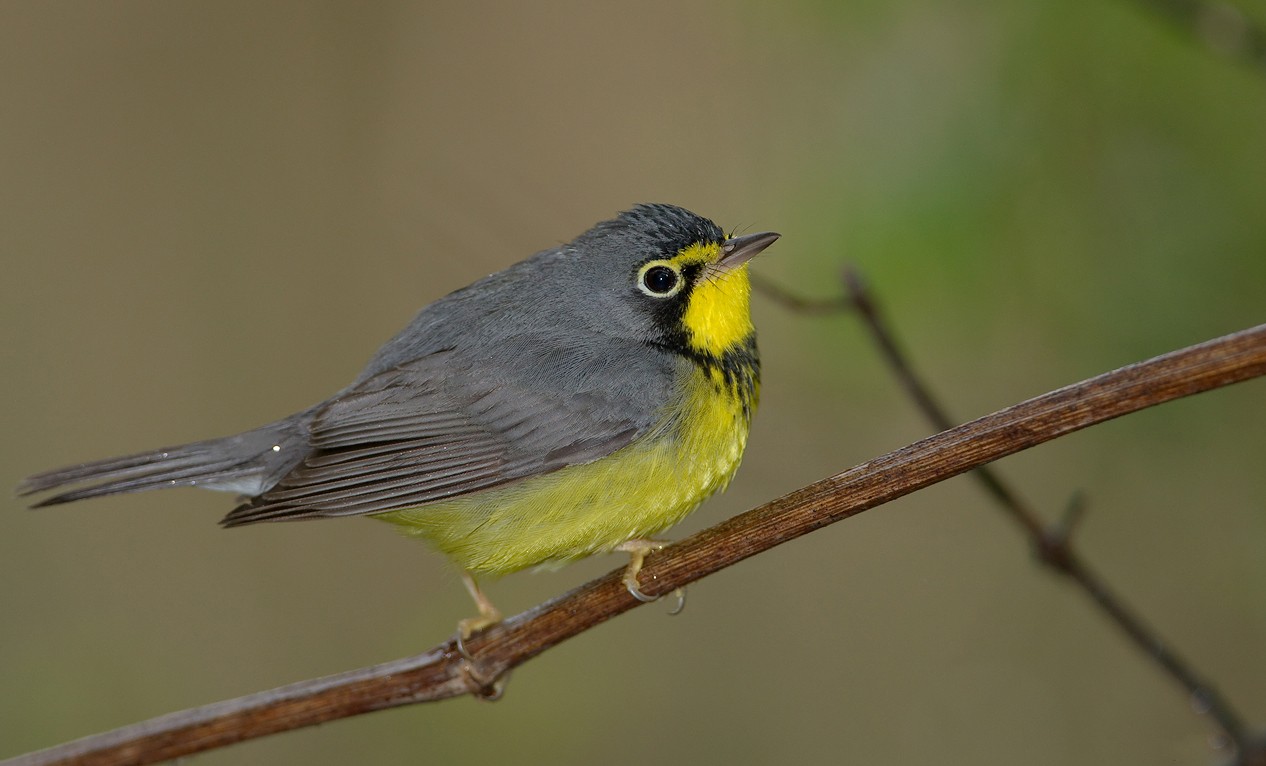Canada Warbler
A species of Red-faced Warblers, Also known as Canadian Flycatcher Scientific name : Cardellina canadensis Genus : Red-faced Warblers
Canada Warbler, A species of Red-faced Warblers
Also known as:
Canadian Flycatcher
Botanical name: Cardellina canadensis
Genus: Red-faced Warblers
 Photo By William H. Majoros , used under CC-BY-SA-3.0 /Cropped and compressed from original
Photo By William H. Majoros , used under CC-BY-SA-3.0 /Cropped and compressed from original Description
The canada Warbler is experiencing declining populations but can still be found in forested areas with good coverage; these birds are sometimes referred to as "Necklaced warblers" due to the black patterning around their throats. The canada Warbler has a long migration period, leaving at the beginning of fall and returning at the end of spring.
Size
13-15 cm (5-6 in)
Colors
Black
Yellow
Gray
Life Expectancy
8 years
Nest Placement
Ground
Clutch Size
2 - 6 eggs
Incubation Period
1 brood
Number of Broods
11 - 12 days
Nestling Period
8 days
Feeding Habits
Canada Warbler predominantly consumes insects including beetles, flies, moths, mosquitoes, and caterpillars, alongside spiders, snails, worms, and occasionally fruit. They exhibit varied foraging tactics, from flycatching and flushing prey out of foliage to searching the ground. Males may hover higher than females when feeding, and in tropical habitats, canada Warbler forages with mixed-species flocks.
Habitat
Canada Warbler thrives in mixed coniferous and deciduous forests with a dense and moist understory, often near water. Habitats range from rhododendron thickets and aspen-poplar woodlands to forested wetlands and swamps. Elevations vary, and during migration, they use shrubby stopover sites. Winter habitats in northern South America include dense undergrowth forests, forest edges, and shade-coffee plantations.
Nest Behavior
Females build the nest in 3-5 days and are responsible for selecting the site and constructing the nest.
Nest Characteristics
Canada Warbler's nest is often located on or near the ground within dense shrubs, ferns, or rhododendrons, typically in a natural depression. The nest is a bulky, cup-shaped structure made of grass, leaves, plant down, moss, and bark strips, lined with animal hair, rootlets, and fine grasses.
Dite type
Insectivorous
People often ask
Migration Overview
The Canada warbler is one of the last birds to arrive at the breeding grounds and one of the first to leave. They may spend only two months there. They fly at night along a route generally south and west to the Texas coast, then to southern Mexico. The arrive at the winter grounds in northwestern South America in late September to early October. 
General Info
Feeding Habits
Bird food type
Bird Feeder Type

Small Tube Feeder

Platform
Sounds
Call
Recording location: Peru
Behavior
Canada Warbler exhibit active foraging patterns, primarily in lower canopy and understory, hopping and wing-flicking as individual or paired behaviors. They show fidelity to breeding territories and may exhibit monogamy, albeit with instances of extra-pair coupling. Unique to canada Warbler, interaction with other species like Wilson's Warblers occurs during migration. Notably, they suffer from nest parasitism, particularly by Brown-headed Cowbirds, impacting offspring survival. A distinctive defensive behavior is exhibited by females pretending to have a wing injury to protect the nest from threats.
Species Status
Not globally threatened.
Scientific Classification
Phylum
Chordates Class
Birds Order
Perching birds Family
New world warblers Genus
Red-faced Warblers Species
Canada Warbler